
JOURNEY TO THE CENTER OF THE EARTH
Her achievements speak for themselves: she’s the best on ice! Hailing from Alto Adige, she has collected three world titles and two World Cups in ice climbing during her career. With a degree in agricultural sciences in her pocket, Angelika Rainer has a passion for the mountains that extends far beyond competitions. But Angelika Rainer is not just results and rankings. Her passion leads her in search of the most fascinating and challenging ice climbing, mixed, and drytooling routes in the world. From “A Line Above the Sky,” which cemented her place as the first woman to climb D15, to Piz Ciavazes, where she was the first woman to free climb the “Italia 61” route.
Iceland, the land of ice. Have you ever seen it from the air? When the setting sun hits its surface, it blazes with a magical pink. An exquisite land where you can still breathe the power of the elements. Here nature assaults you with its exuberance. It gives you the thrill of an adventure on the edge of the known world.
Three hundred and forty kilometers from Reykjavik, the country’s capital, is the Vatnajökull National Park, the largest ice cap in Europe, with its 8,100 square kilometers of surface area. We’re talking about the fourth-largest ice field in the world, after the Antarctic ice sheet, the Greenland ice sheet, and the Campo de Hielo Sur in Patagonia.
A huge surface on which incredible glacial scenarios open up, offering a thousand and more possibilities for ice climbing enthusiasts, from the most classic waterfalls, to caves, to the famous moulins — large vertical shafts that penetrate into the depths of the glacier and that can only be climbed in the summer.
Moulins usually form in the flat areas of glaciers, due to the water that infiltrates deep through the crevasses. They exist in all sizes; the largest descend toward the base of the glacier for hundreds of meters, and some reach the rock at the base. They offer a very rare opportunity for climbing in a unique environment. You rappel to the bottom and then return to the surface by climbing with ice axes and crampons. From the cold dark of the ice to the light of life … what an incredible feeling!
Since they aren’t accessible in the winter, due to the snow that fills them, we choose to make our journey in the fall, the best time to descend into this vertical world. We find this out thanks to Matteo Meucci, an Italian friend who has been living and working in Iceland for the past seven years as a guide.
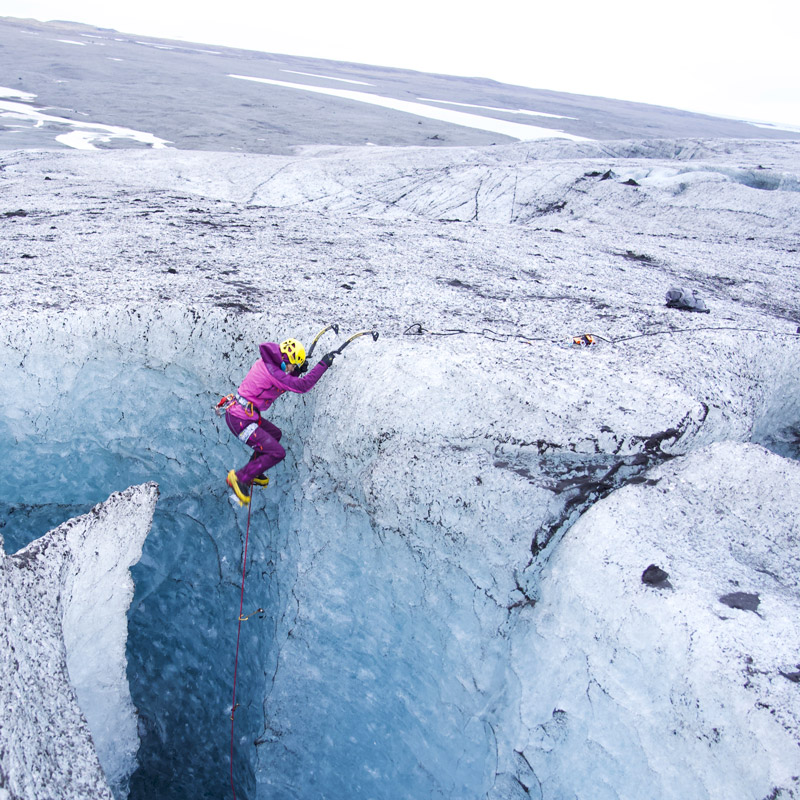
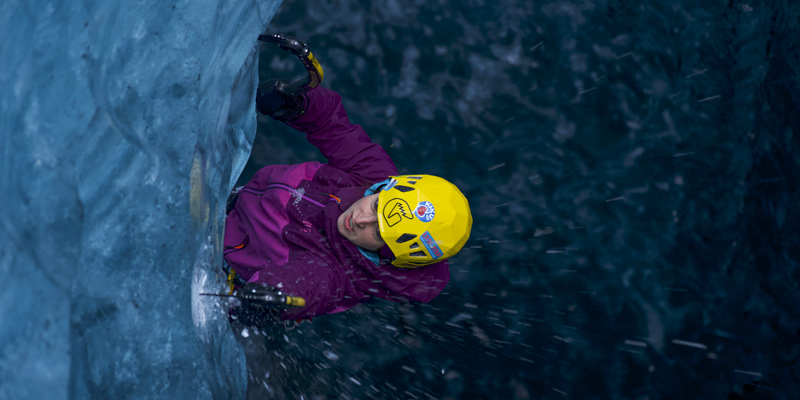
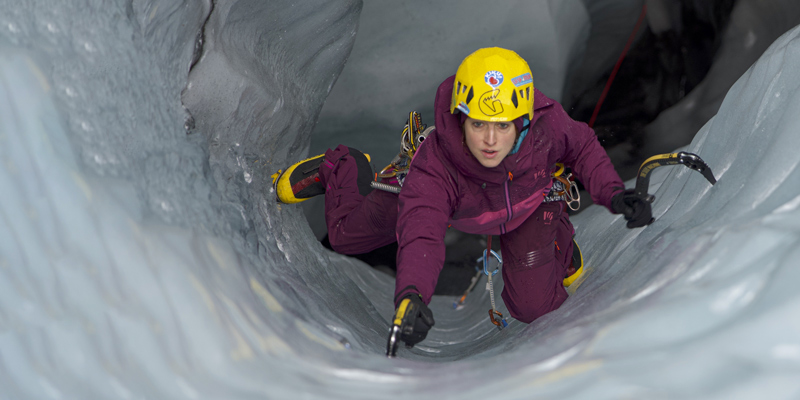
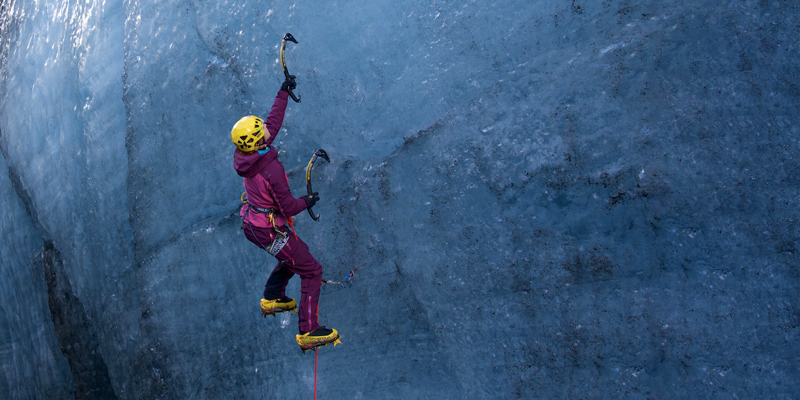
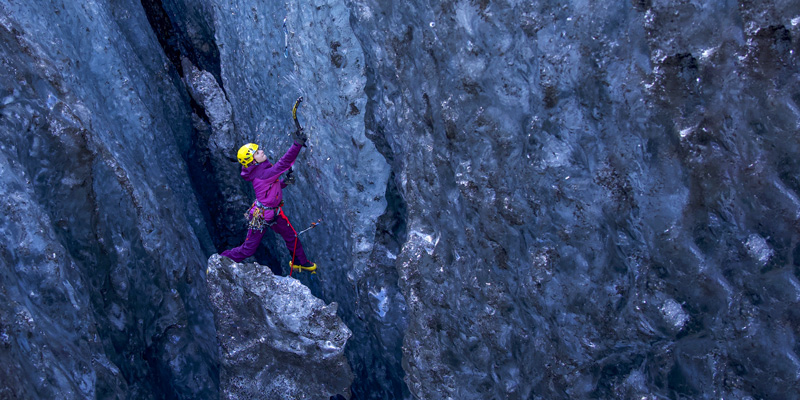
JOURNEY TO THE CENTER OF THE EARTH
When we land, Matteo immediately shows us the schedule. He wants to keep us on our toes, and before taking us to the moulins he’s decided to organize several days focused on the vertical world and climbing. It almost seems like a preparatory course to help us learn about Iceland before going in search of what is the most iconic of the experiences to be had here, in the far north.
The first day we stay close to the capital, Reykjavik. He takes us to a small dry-tooling cliff overlooking the sea. He bolted it himself, and it offers many intermediate-difficulty pitches on which we regain our confidence after the long journey. Waking up on the second day, we’re full of anticipation. We embark on a long journey to the town of Vik in the east, with our thoughts focused on the moulins. Finding them is not difficult, as we discover with experience. After a gentle start, the walls descend vertically toward the depths of the glacier, extending up to 70 meters. Dark caves, where we climb by the light of our headlamps — a surreal experience. I remember it as if it were yesterday: the sound of my breathing, the feeling of being in a closed environment. The cold during the rappel to that unknown and mysterious place. An adrenaline rush, followed by the reassuring sensation of crampons on the ice and the secure grip of the ice axes.
Like frozen waterfalls, moulins are also unique and ephemeral. Each has forms and structures that distinguish it and that determine the type of climbing that is possible on its vertical surfaces. They are fragile and fleeting ... ephemeral as only ice can be. On the Vatnajökull glacier we find the most intriguing formations. A white moulin, slightly striated, as if it were carved in marble. Another is so transparent that you can see the thread of the ice screw going in. The strangest is pitch black, colored by volcanic ash trapped by the solid water. Delving into the discovery of these caverns is like experiencing a journey to the center of the Earth, in the footsteps of Jules Verne.
FEATURED PRODUCTS
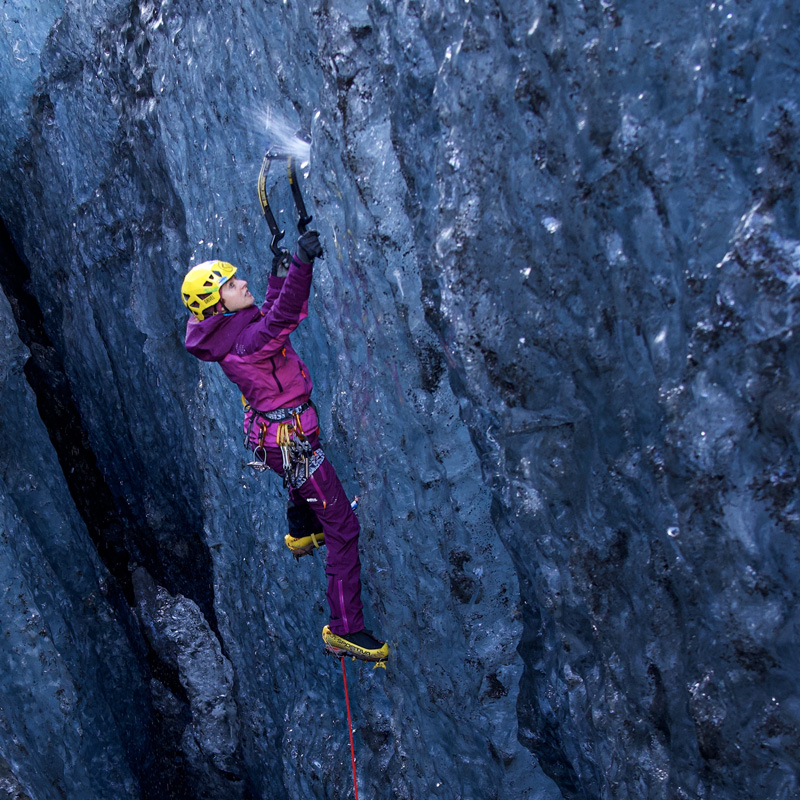


-
JORASSES PLUS W JACKET
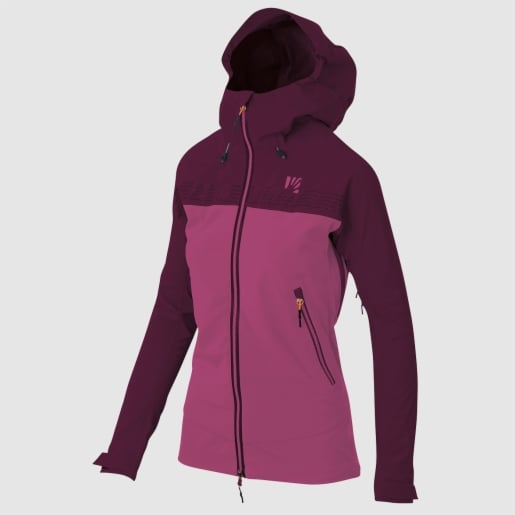
JORASSES PLUS W JACKET
-
JORASSES PLUS W PANT

JORASSES PLUS W PANT
THE MOULIN THAT DISAPPEARED
“Impossible!” Matteo says with a smile when we ask him about a specific moulin. “It’s gone.” For a moment we don’t understand; we have photos and videos. That’s how we discovered these formations and the possibility of practicing such an exotic type of ice climbing. “In that area, the glacier has retreated by tens of meters, taking away the cave as well.” Here the ephemeral nature of ice manifests itself before our eyes in the harshest possible way, under the impact of the climate crisis.
It was the moulin we’d been dreaming of since we left, the one we carefully planned by observing videos and photos of a North American expedition. Five years have passed since that expedition, and where before there was a vast and thick glacier, today only bare rock remains.
Iceland’s glaciers have been retreating at a tremendous rate since 2000, suffering a loss of volume that’s among the highest in the world. They lose tens of meters a year, and because most of the places we’ve climbed are on the front part of the glaciers, they will probably be completely transformed, if not gone, by next year. When you observe such a phenomenon with your own eyes, you can’t help but ask yourself about your actions and what you can do to counter the phenomenon. Traveling in an ecologically responsible way, trying to impact the environment as little as possible, is certainly one of those goals that you think about when you’re going to a distant and isolated place like Iceland. After all, big changes start with small actions. It’s up to us to notice the crossroads and take new paths.
The ephemeral nature of ice manifests itself before our eyes in the harshest possible way, under the impact of the climate crisis. It was the moulin we’d been dreaming of since we left, the one we carefully planned by observing videos and photos of a North American expedition. Five years have passed since that expedition, and where before there was a vast and thick glacier, today only bare rock remains. Iceland’s glaciers have been retreating at a tremendous rate since 2000, suffering a loss of volume that’s among the highest in the world.